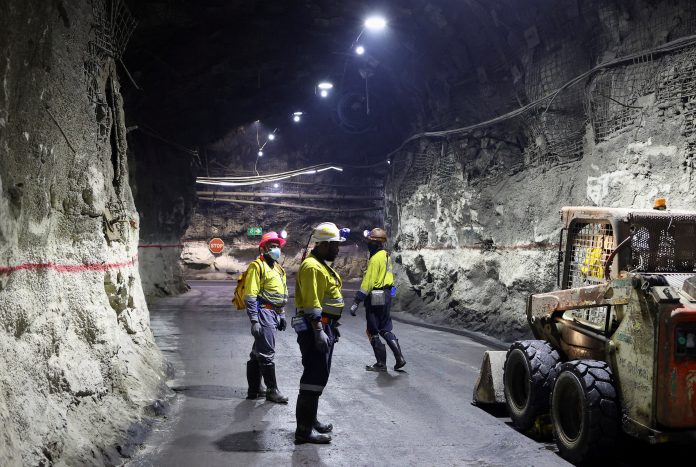As mining wages swell but output lags, dismissal of the sector’s sustainability balance is becoming a critical risk for Africa’s resource-based economies. In the second quarter, miners’ remuneration in South Africa rose by 2.2 percent quarter-on-quarter to R49.8 billion, while broader wage growth across the economy advanced at a 3.4 percent annual pace. Mining industry leaders now warn that wage growth is decoupling from productivity, raising the specter of inflation, weaker profits, and eroded competitiveness on the global stage.
The Minerals Council of South Africa has characterized this widening chasm between pay and performance as symptomatic of union dominance that no longer aligns with economic realities. While mining faces genuine constraints, from resource depletion to fluctuating commodity prices, the council argues current wage pressures threaten to push firms into loss or contraction, especially in marginal sub-sectors like ferrochrome, which has shed capacity and jobs since 2014 in part because of high input costs relative to output.
To grasp the stakes, one must look at how Africa’s mining transformation is unfolding. Across the continent, countries like Zambia, Ghana, and Botswana have positioned mining revenue as a pillar of sustainable development; financing infrastructure, health systems, and industrialization. In those settings, wage-productivity balance matters not just for corporate margins but for the broader social contract: overly compressed profitability constrains reinvestment, tax contributions, and forward capital for new mineral projects no longer viable under legacy cost structures.
In South Africa’s case, the council draws attention to long-term trends: since 2016, labor compensation has risen steadily despite volatile or contracting profitability across key minerals. Gross operating surplus in several core mining subsectors has declined, shrinking the base available for capital reinvestment, environmental rehabilitation, and exploration. When wage increases outpace growth in output or value, debt burdens and capital costs rise, compelling firms to cut back, delay projects, or shutter unprofitable mines, especially those located in remote or less productive ore belts.
Union leaders, however, push back aggressively. The National Union of Mineworkers contends that the Minerals Council’s framing is a “justification” for substituting permanent jobs with contract labor, which they say erodes worker security and accountability underground. They also point to executive pay gaps and argue that inflation-indexed raises often leave workers behind, especially when rising living costs outpace nominal wage gains. The union narrative frames this debate as one over equity and dignity, not merely balance sheets and margins.
In some quarters of the policy community, the debate becomes a test of industrial relations maturity. Mining analyst Stephen Meintjes suggests that both sides may need to compromise: advocating wage moderation now in exchange for performance bonuses or profit-sharing during boom periods. Such schemes could align incentives across workers, management, and investors, but only if deployed with transparency, realistic metrics, and safeguards against manipulation.
Beyond South Africa, the mining sector in Africa is increasingly judged not just by output or foreign direct investment, but by how equitably it shares benefits, catalyzes industrial linkages, and upholds environmental commitments. The Mining Yearbook 2025 highlights emerging pressures across the continent: in nations like the Democratic Republic of Congo and Guinea, artisanal mining wages are rising sharply even as gold and bauxite yields stagnate, squeezing margins and triggering informal disputes over royalty and community benefits. In places like Tanzania, regulatory uncertainty has exacerbated wage pressures, pushing firms to scale back staffing to remain viable.
This wage–productivity tension could also feed into inflationary dynamics. If mining firms are forced to raise prices or freight premiums to maintain margins, downstream industries and consumers may face higher costs, weakening demand for minerals and finished goods alike. In economies heavily reliant on mining revenue or export minerals, such as Zambia, Mozambique, or Mauritania, the ripple effects can undermine macroeconomic stability.
The mining sector’s social license depends on more than environmental safeguards and community investment. It depends on building economic systems where labor compensation, capital returns, and reinvestment are aligned over medium-term cycles. If wages persistently outstrip productivity, mining risks becoming a drag rather than a driver of inclusive, green growth.
Firms in South Africa might now have to adopt incentive-linked compensation structures, tighten operational efficiency, invest in automation only where justified by productivity gains, and negotiate multi-year wage frameworks tied to profitability bands. Governments, meanwhile, can encourage these dynamics through tax incentives for performance-based labor contracts, structured royalty formulas that reward output efficiencies, and direct support for skills and technology upgrades that raise worker productivity.
However, these fixes are not simple. They demand trust, transparency, independent verification of productivity metrics, and credible institutions to adjudicate disputes. Public authorities must ensure that wage moderation does not erode worker dignity or precipitate strikes that shut down production. Similarly, unions must guard against one-off wage leaps that derail fiscally sustainable growth. The future of mining in Africa may depend less on whether minerals lie beneath the surface, and more on whether the structures above the ground can distribute value wisely, sustainably, and fairly.







